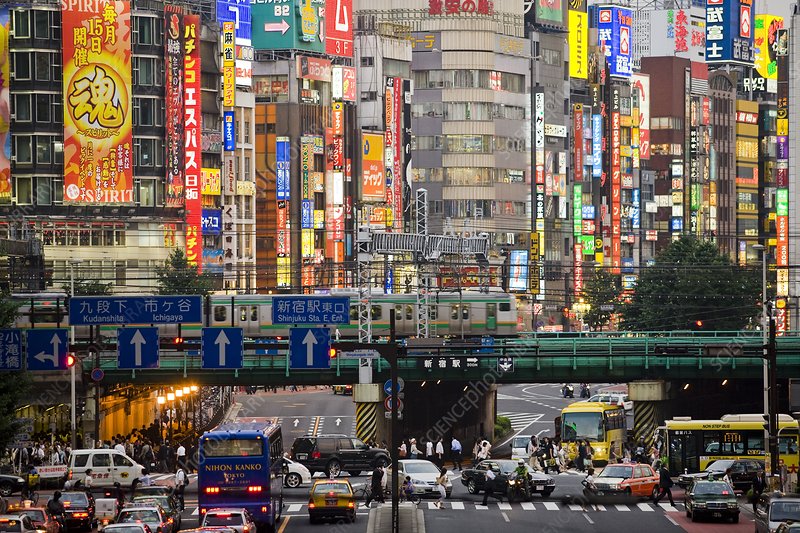Japan’s textile sector occupies important position in the high-end textiles field
Apr 07, 2022 | by Zhao Xinhua

Japan is one of the world leaders in textile technology, including textile machinery, clothing machinery, chemical fiber technology, dyeing finishing, new product development, brand design, marketing and many other aspects. The modernization of Japanese textile/clothing machine combines technology with fabric perfectly, thus designing all kinds of new high-quality fabrics.
Japanese textile and garment market has great dependence on Chinese products. For a long time, Japan has imported a large number of textiles and garments from overseas, especially from China, which has changed its traditional industrial structure of mass production center. Japan’s textiles simply cannot compete with imports in the middle and lower end of the market. In the past 10 years, the number of textile manufacturing enterprises and employment in Japan has decreased by 40-50 percent. However, the long-term technical development and product planning capabilities in Japanese textile sector make it occupy an increasingly important position in the high-end textiles field.
For example, the advantage of Japan’s fiber industry is embodied in the research and development and application of new fiber materials. In terms of research and development, the enterprises from upstream to downstream have high technology development capacity and commodity development capacity. In particular, Japan has advanced technology in developing high-performance and next-generation fibers, protecting the environment, and saving energy. Japan’s pan-based carbon fibers have accounted for 3/4 of the world’s total production capacity and 70 percent of its output.
Looking back over the past two years, the pandemic has also brought a huge impact on Japan’s textile and garment industry. Take the major textile and clothing retail market as an example, the Japanese market has been in a state of weak demand since the outbreak of the pandemic, and the development of textile and clothing consumption has stagnated. Although the Japanese government also took a series of measures to stimulate economic development and boost consumption, the machinery and equipment, medicine and health, fuel and energy, clothing and other daily consumer goods retail is still not up.
Compared with the rising and falling of the European and American retail markets, although the Japanese market also sharply dropped in April at the beginning of the pandemic, the changes in both the initial decline and the later rebound were relatively mild.
In April 2020, when major global retail markets were most affected, the monthly retail sales apparel in the Japanese market decreased by the maximum of 54.1 percent year-on-year, much lower than 87 percent in the United States and 78 percent in the European Union. However, in April 2021, a year later, under the dual influence of economic recovery and low base, the retail sales of textile and clothing products in Japan only increased by 63.3 percent, while Europe and the United States had strong year-on-year growth (764.6 percent year-on-year growth in the United States and 130 percent year-on-year growth in the European Union). In terms of consumption sum, the retail sales of Japanese clothing in 2021 was 8.6 trillion yen, far lower than the 11 trillion yen in 2019, indicating a weak recovery, according to the monthly data of textile and garment retail released by the Ministry of Economy, Trade and Industry of Japan (METI).
Looking at the development trend of Japanese retail market in the past 10 years, it is not difficult to see that the proportion of textile and apparel consumption in Japan’s overall retail consumption is slowly declining year by year. Japanese consumers’ desire to buy clothing has repeatedly decreased affected by the pandemic, making it difficult for consumption to recover.
The Ministry of Economy, Trade and Industry of Japan stated the strategic goals of Japan’s textile and garment industry. The short-term goals are to strengthen the training of garment professionals, strengthen the specification formulation, production and sales of raw materials and products, and promote the creation of new garment businesses; the mid-term goal is to promote the integration of sensibility and technology, and form a garment industry cluster with creativity; the long-term goal is to strengthen the international competitiveness of the Japanese garment industry and form a system that can foster a large number of world-class brands.
Japanese textile companies are also actively responding to changes in the market, accelerating the establishment of production systems in Asia, and making efforts to expand overseas business from the perspective of how to expand overseas sales. Japanese textile companies are shifting to planning and development type, accelerating the trend of outsourcing the production of high value-added goods to overseas companies, and further enhancing the sensibility and functionality of products through unique materials and increasing the proportion of unique differentiated products.
Functional and intelligent fabrics are easy to achieve high value-added because of their high technology content, which is the strategic focus of Japanese textile enterprises in the future. With the strengthening of fabric research and development of Chinese textile enterprises, many Japanese enterprises regard Chinese textile enterprises as the first competitor in this field.
In 2022, if Japan, under the shadow of global high inflation, cannot continue to implement effective fiscal stimulus policies and maintain the sustainable development of domestic economy, its textile and garment industry may face greater challenges.








